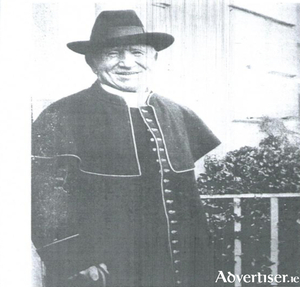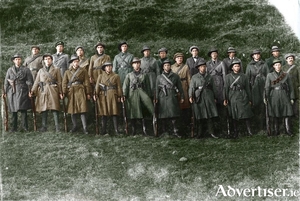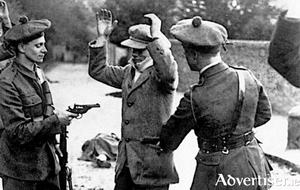Search Results for 'policeman'
31 results found.
The Last Pearl in Galway

Using scaled models, bunraku and shadow puppetry, the Blue Raincoat Theatre will perform The Last Pearl at the Town Hall Theatre on Thursday, February 13 and Friday, February 14.
Liptons in Shop Street

Our first image today is a beautiful study of part of Shop Street c1900. It is one of a number of Galway city photographs that are in an old album belonging to Norman Healy whom we thank for sharing it with us. The two women in the foreground are in their working clothes, plain black shawls and práiscíns which were heavy canvas working aprons used to carry vegetables or maybe fish in, or wear when they were washing clothes. One is carrying a basket which probably contained product she had to sell, possibly eggs, country butter or vegetables. The other lady may have had a basket strapped to her back. The gentleman behind is wearing an impressive white báinín jacket.
Fatal crash car had travelled 2km in wrong direction, inquest told

A car which collided with another, killing a family of three and its own driver had travelled 2km in the wrong direction before the impact, an inquest was told this week.
The attack on Clifden, ‘something of this sort…’

Under the heading ‘Panic in the town last night’ The Connacht Tribune told the story of the attack on Clifden on March 19 1921: ‘Following the shooting of RIC Constable Reynolds, and the wounding of Constable Sweeney (who was to die from his wounds some hours later), at Clifden last night, panic reigned in the town and nine of the principal houses were burned.
British Army and RIC unleash terror on the streets of Clifden

March 1921 saw the British army's D Company Auxiliaries continue their tour of east Galway, assisted by an RAF spotter plane, the RIC, the Black and Tans, and various members of the Crown Forces.
'If one policeman is shot here up goes the town'

By early 1921 Britain’s war in Ireland was not just a moral issue, but a financial one. The sheer expense of solving 'The Irish Question', considering financial reparation for the loss of civilian life and destruction of private property, along with the price tag of the Crown Forces’ operations in Ireland, was staggering.
100 years since Oranmore’s Joe Howley was shot

In the centre of Oranmore, stands a statue to a local man who was shot in Dublin one hundred years ago this week. Joe Howley, Officer Commanding Number One Brigade IRA Galway was killed leaving what is now Heuston Station, Dublin on December 4 1920, and was pronounced dead at 12.30 a.m. December 5 in George V Hospital Dublin.
Why a political revolt by Ireland’s under twenty fives is now a certainty

One recent evening Insider watched the 1967 Jean-Luc Godard film La Chinoise in which a small group of French students sit around their apartment, located in what is described as a “workers’ district”, and engage in theatrical discussions about how they must overthrow the bourgeoise and, in particular, the hierarchal French university system which saw students as passive receivers of knowledge handed down by their god-like professors, rather than participants in a dialectical exchange in which both students and teachers learn from each other and grow as a result. No one, with the exception of chairman Mao, is radical enough for most of these students. The French Communist Party which, to draw an Irish parallel, would have been more or less the political equivalent of present day Sinn Féin, is condemned as hopelessly “revisionist”. The Soviet Union, in particular its then president, the now largely forgotten Mr Kosygin, is convicted by the students at their kitchen table discussions of failing to do enough to support the Vietnamese in their war against Lyndon Johnson. And the French working class, with whom said kitchen table debaters absolutely sympathise, are seen as hopelessly passive. In a mix of desperation, madness, and idealism, the students decide to mount a campaign of terrorism, which will involve them doing something they have singularly failed to do for most of the film; getting up from that kitchen table and going outside. They plan to kill the visiting Soviet minister for culture who has been invited by President de Gaulle’s own culture minister, the novelist and decayed Stalinist intellectual Andre Malraux, to open a new wing of the university. After that, they hope to bomb the Sorbonne in the belief that this will spark a revolution. Insider is against blowing up universities. Partly because he knows such actions more often provoke backlash than revolution. But also because Insider happens to teach at a university and coming out in favour of blowing up universities might lead to an awkward email from one’s department head.
Les Misérables; a tension filled look at France's uneasy problem

Little did I know when I had left my recliner seat in screen seven at Omniplex Salthill on Thursday October 1 that it would be my last cinema experience for the foreseeable future as a level three lockdown was enforced the next Tuesday. But like most things in life, it is always good to go out with a bang and Les Misérables certainly provides plenty.


